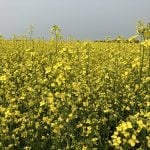
Cow-Calf

A great video that shows calving techniques
Animal Health: It helps to correct a malpresentation when you know what it looks like

Lower cattle supplies will be the theme for 2023
Market Update with Jerry Klassen: Consumers keep buying despite inflation and high interest rates

Getting ready for calving season
Eppich News: Milking two cows leads to a wide range of homemade dairy products

Tightening the calving season
How to increase profitability through calving distribution

More than one way to get replacement cows
The general rule of an annual 10 per cent turnover in the cow herd may be an underestimate

Miscellaneous health problems in calves
Animal Health: A little extra time spent checking newborn calves might help reduce losses

First-calf heifers need to be prepared for rebreeding
They need to calve in good condition and then be kept in good condition as they also continue to grow and nurse a calf

Tips on when and how to check a cow when calving
It’s a combination of art and science to know when to assist in a birth without being too forceful

Important tips on birthing backward calves
You need to confirm their actual position before you start pulling

Get and keep cows ready for rebreeding
A balanced ration needs to include essential mineral mix


